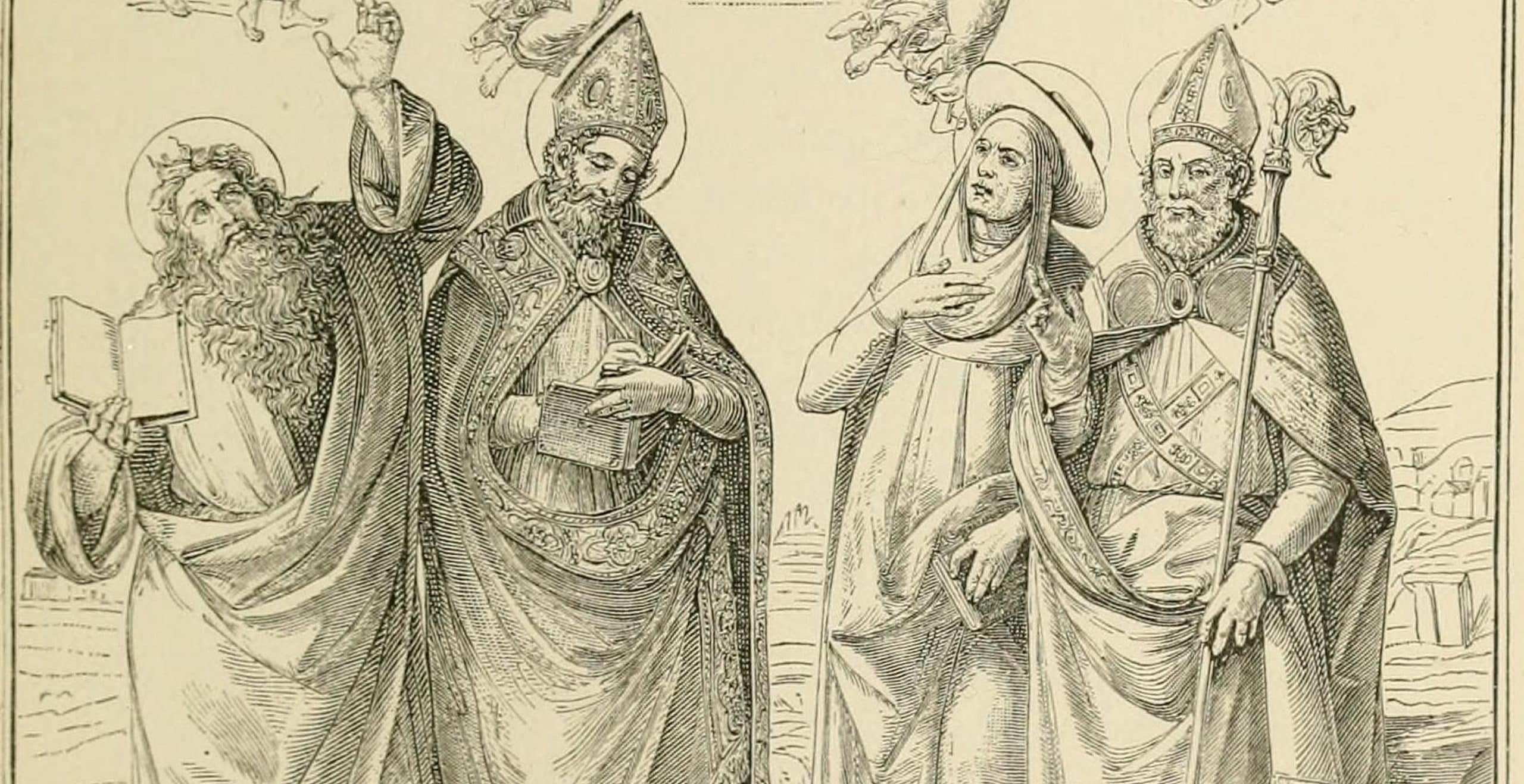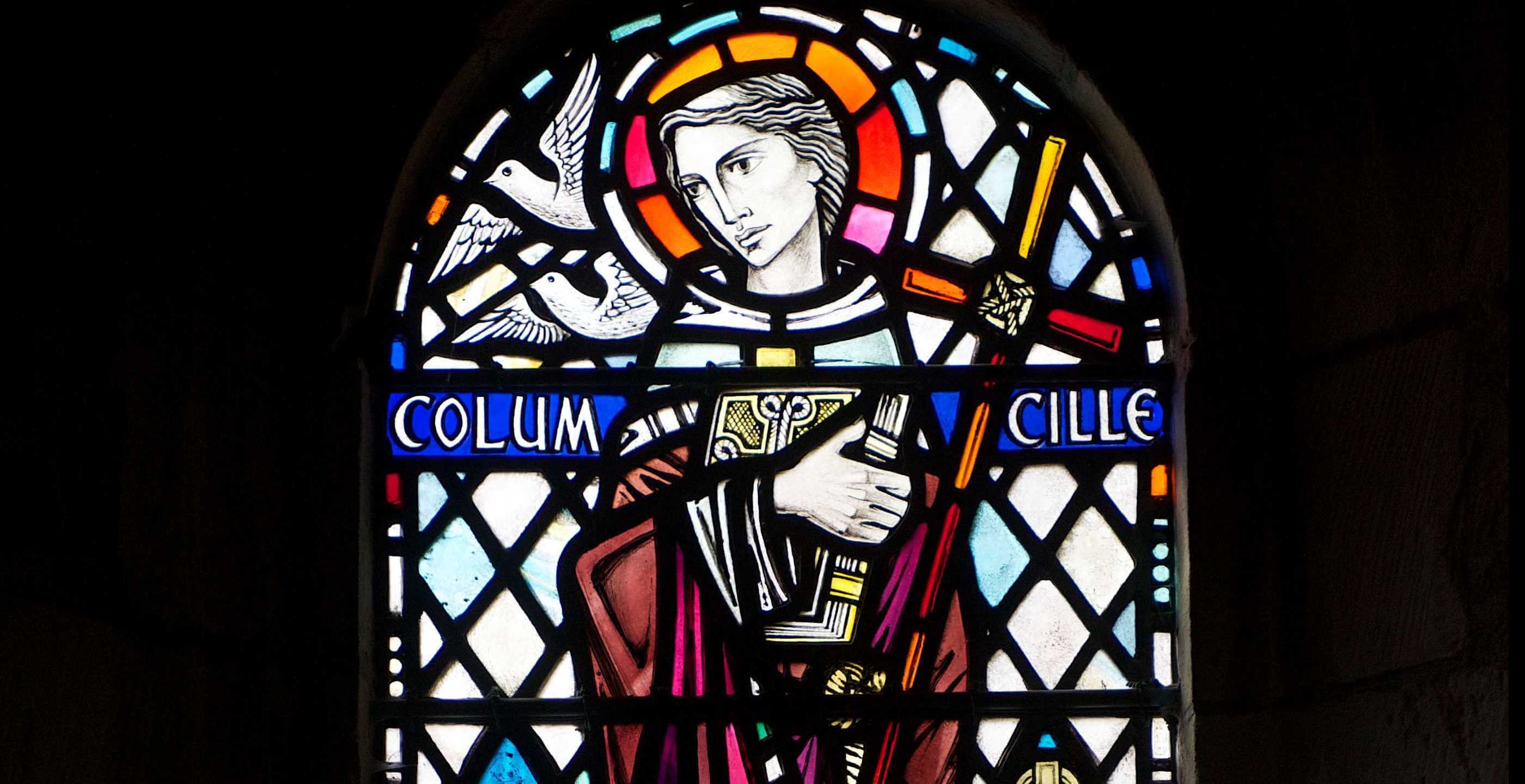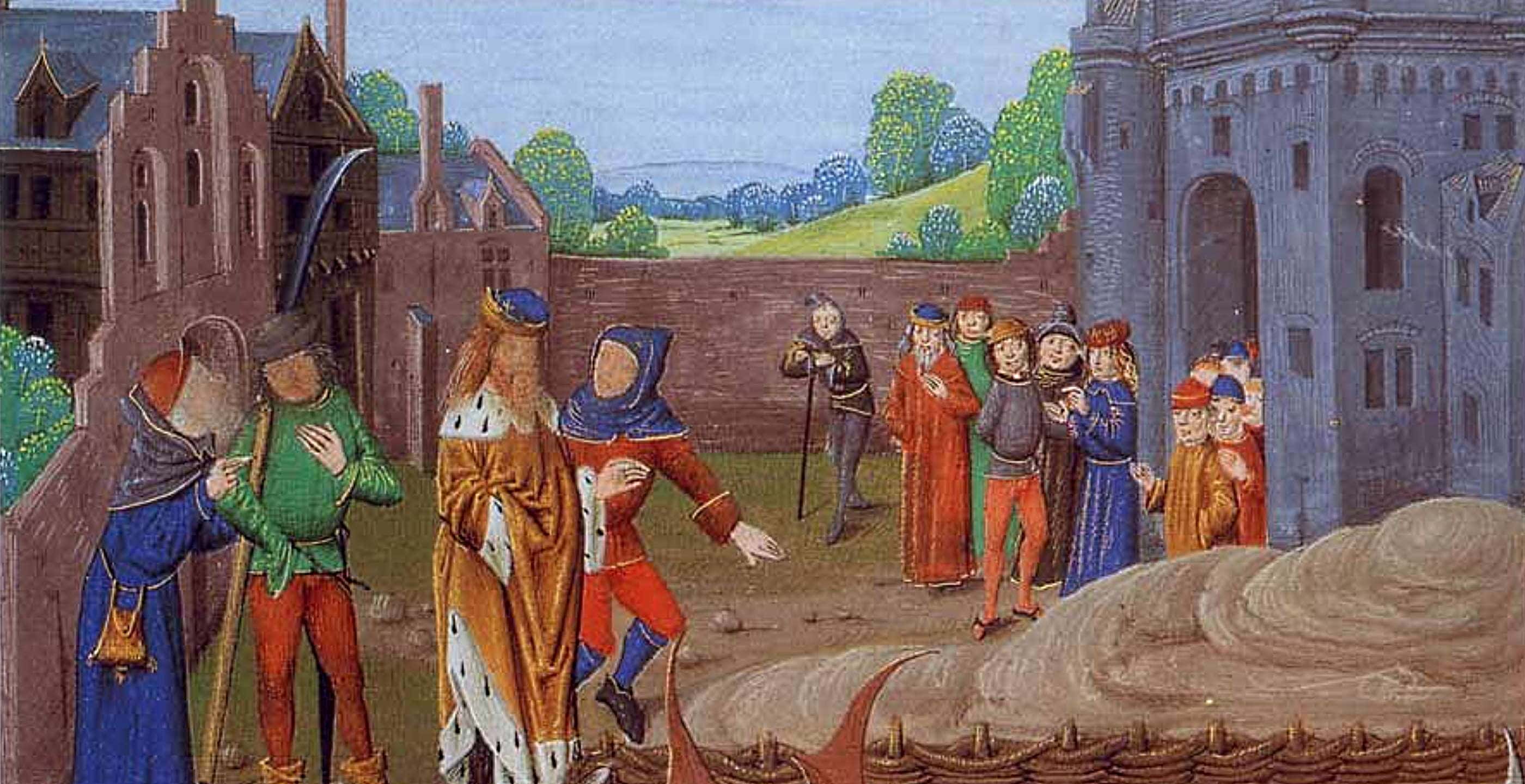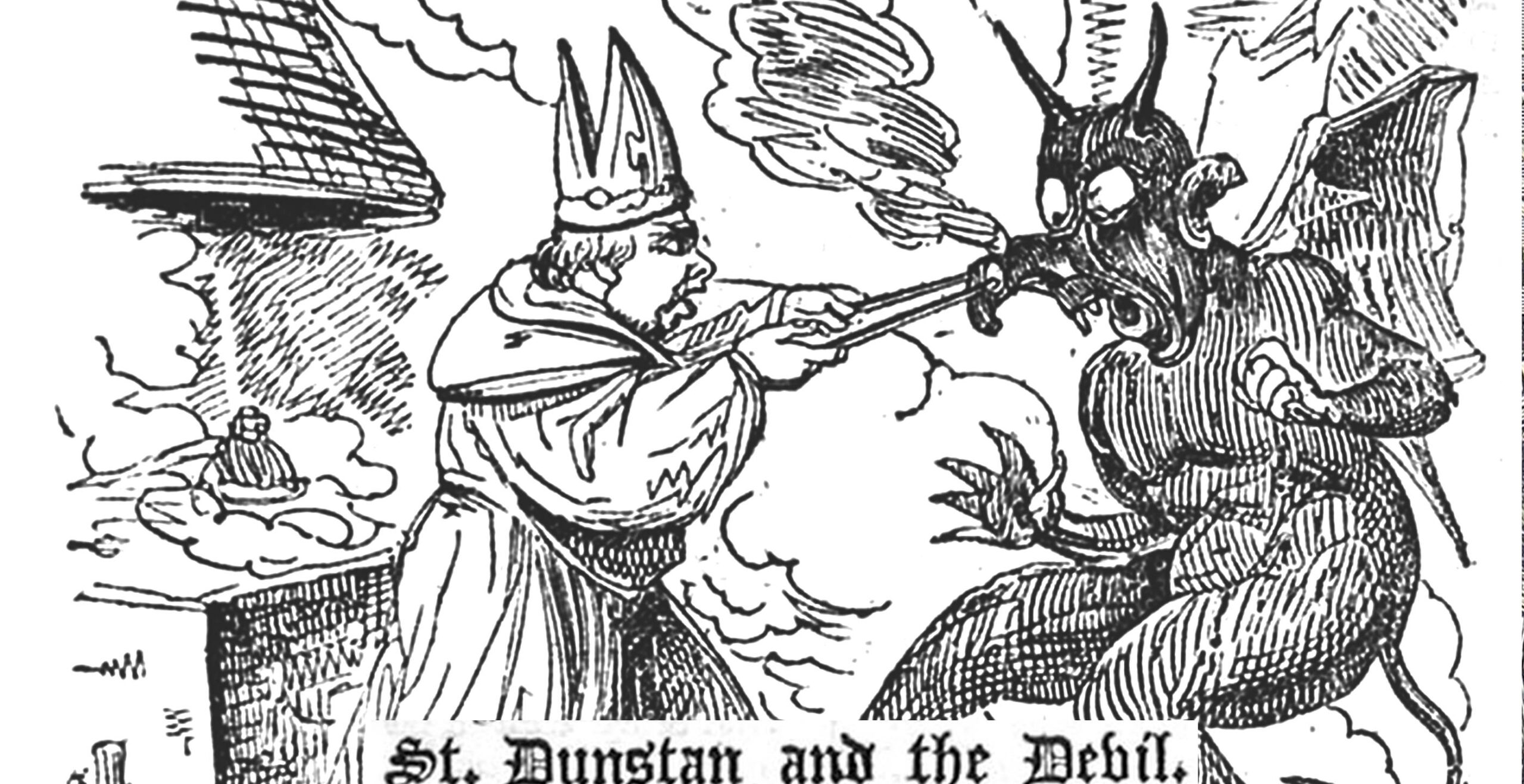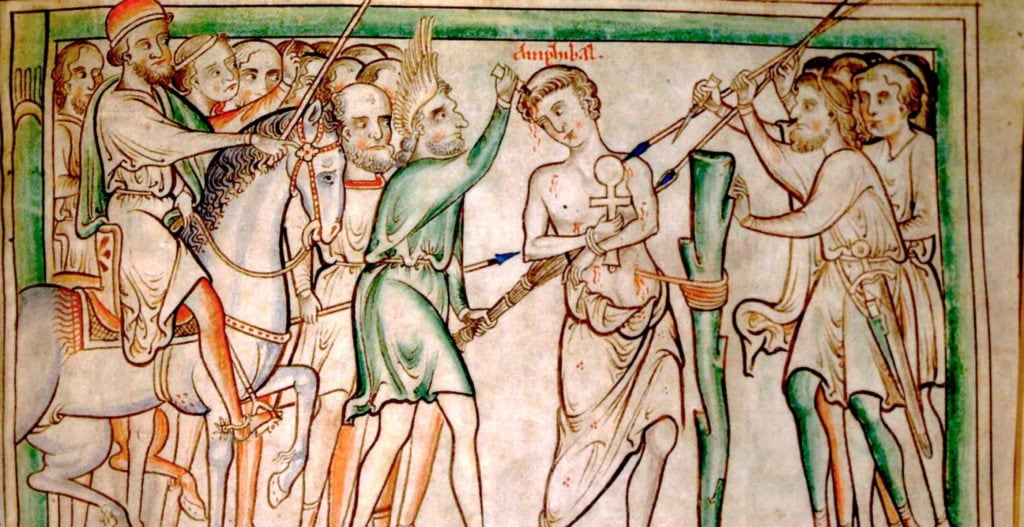There are plenty of famous and historic places in Britain. But history can also be quiet, local, and forgotten to all but a few – and the exaggerated, mythologised tales of early saints are one of the best ways to experience that. Below are two present-day sites linked to figures whose lives are all but lost today – but speak volumes about the time in which they lived and whose stories survived due to a ruin, a cult or a quirk of fate.
St Albans, Hertfordshire: St Amphibalus’ refuge
Our first saint dates back to the first centuries of recorded English history. Early Christianity was one of many cults spreading within the Roman world but was often singled out for persecution, due both to its secretive, often-misunderstood nature and the fact that Christians refused to sacrifice to the emperor – an inadvertent challenge to his authority.
During one of these events, most likely initiated in the third century AD, a fleeing priest came to the town of Verulamium, north of London. Desperate to avoid detection, the priest lived undercover at the home of a Roman citizen named Alban – and converted Alban and his household to Christianity.
However, the priest was uncovered and the authorities arrived to arrest him. In a moment of extreme bravery Alban donned the priest’s cloak, claimed to be him, and was taken away to execution in his place.
Medieval sources relate that Alban’s efforts were ultimately in vain, as the priest himself was executed days later. Alban had the last laugh on the Verulamium authorities, as when the town was ultimately abandoned, the new community and abbey that grew up on the opposite hill (where the execution had taken place) was named St Albans after him.
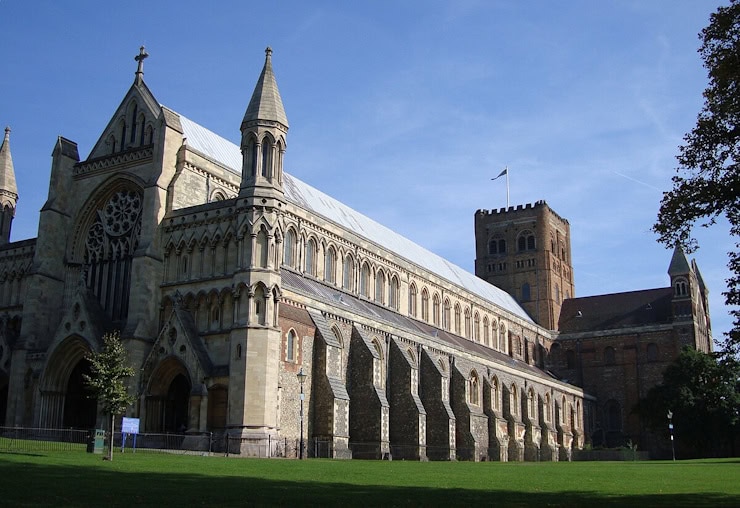
Yet this story is about Amphibalus, not Alban. And this is where the confusion lies, because whilst the priest became known as Amphibalus this was almost certainly not his name. Instead an amphibole refers to the cloak Alban is said to have worn to protect his guest. What followed was likely a combination of retold stories, financial expediency and poor translation.
Whilst Amphibalus was referenced in the centuries after his death, it took Geoffrey of Monmouth’s twelfth-century account to name him. One possibility is that Amphibalus was already a shorthand for the unnamed character in the increasingly popular story of Alban – the other is that Geoffrey misread his own sources and instead of noting that Alban used an amphibole to protect the priest, he protected the priest named Amphibalus. When the cult of Amphibalus began to grow in popularity from the fourteenth century onwards, with an accompanying flow of donations to his relics at St Albans Abbey, it would have made sense to ensure the otherwise anonymous saint had a memorable title.
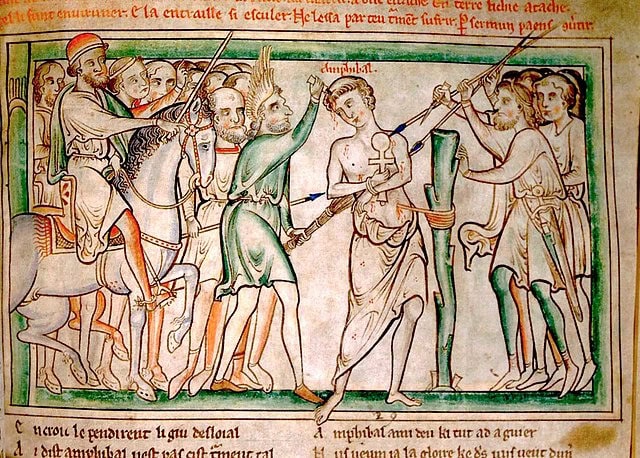
And the legend of Amphibalus survives to this day. In 2021, eighteen centuries after his supposed martyrdom, a restored shrine was opened at St Albans Abbey for the first time since the Reformation. It seems that Amphibalus, the saint named after a cloak, will be known that way for a long time to come.
Crowland Abbey, Lincolnshire: St Guthlac’s hermitage
Our second story takes us to a marshy island in Lincolnshire at the end of the seventh century AD. The period saw the land that would become England dominated by the kingdom of Mercia, and among its warriors was a young man called Guthlac. As a son of the king, he fought to maintain Mercian dominance in war, but by his mid-twenties had tired of the trappings of wealth and privilege, deciding instead to become a monk and then a hermit. Hermits and other ascetics lived on the edge of society, finding the most remote locations and the toughest living conditions to bring them closer to God.
And Guthlac was no exception. He ventured deep into the marshes and found what was, to him, a swampy paradise promising solitude and hardship. For shelter he chose an ancient barrow, dug into by treasure hunters.
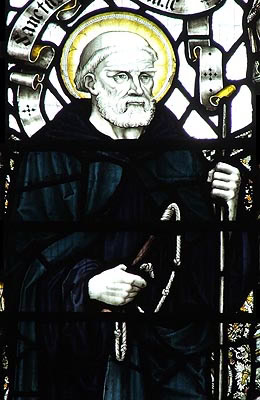
According to his biographer, however, the barrow fought back. Night after night Guthlac was visited by demons speaking Brittonic, the language used in Wales and the West Country and also by those who had lived in Lincolnshire before Germanic settlers displaced them. The biographer relates that the demons accused Guthlac of “occupying our home in our very midst” but whilst the hermit was psychologically tormented and experienced burning pain during the visitations (potentially due both to hallucinogenic fungal elements in his bread and malarial mosquitoes), he refused to move. Eventually his trial ended, the demons having seemingly exhausted themselves trying to force the saint out, and “the cuckoos announced the spring”.
Ironically, removing himself from society led to him being seen as an oracle of wisdom and he was sought out for spiritual guidance. A legend that he also sheltered Mercian royalty, perhaps believable due to his own high birth, resulted in a pledge to build an abbey by way of thanks.
Whilst Guthlac’s tale has faded into obscurity, the remains of Crowland Abbey, built after his death in 714 AD, remain. Whilst it was later raided by Vikings and emptied by Henry VIII’s agents during the Reformation, the nave remains to this day as a parish church.
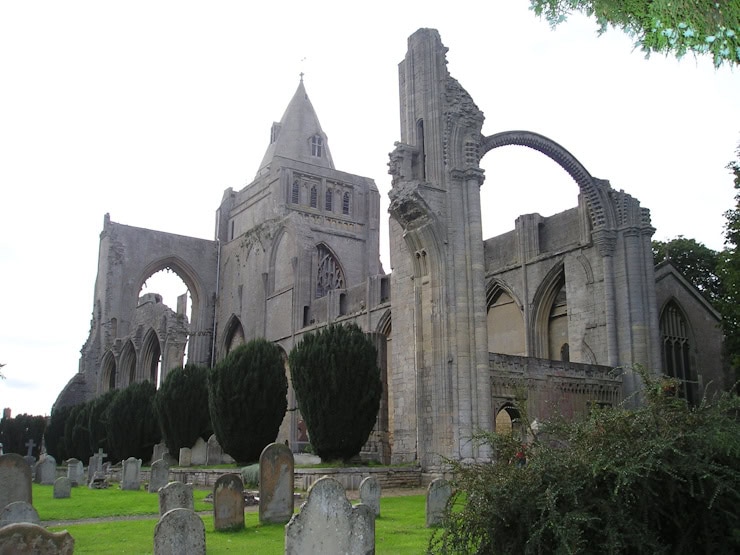
Guthlac is one of many hermit-saints in early medieval England. But his story is much more unusual, providing a rare account of how ancient people viewed their own history. It recalls a land of mythologised monuments and forgotten cultures, where ancient Neolithic or Bronze Age burial mounds were seen both as repositories of treasure and the home of terrifying demons linked to older, lost customs. History and myth, after all, are not just modern inventions.
Peter Wollweber graduated with an MA in History from the University of St Andrews in 2021, focusing his thesis on the cultural links between late Roman and early medieval Britain. As a Thames ‘mudlark’ in his spare time, he is interested in all things related to material culture and how the ancient past was understood, mythologised and rewritten by later generations.
Published: 13th February 2025



